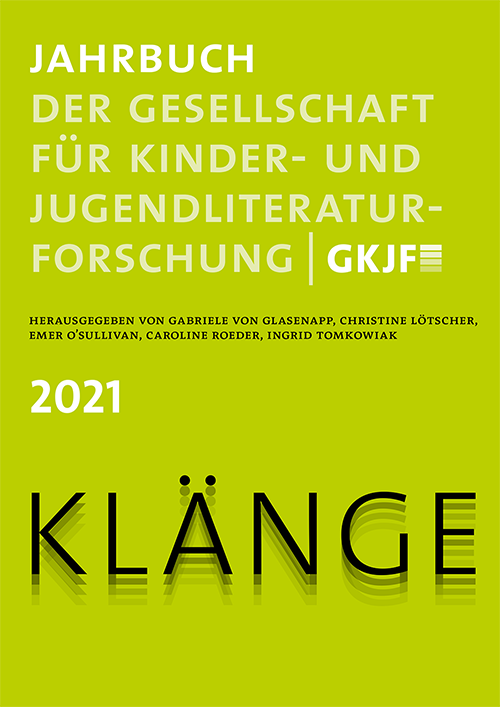Das Bilderbuch als Klangmedium
Ästhetische, wissenschaftliche und künstlerische Perspektiven
DOI:
https://doi.org/10.21248/gkjf-jb.63Abstract
Artikelbeginn:
[English title and abstract below]
Musik und Klang können auf unterschiedliche Weise Eingang in ein Bilderbuch finden. Aus methodischer Sicht lassen sich auf der einen Seite außermusikalische Inhalte (v. a. Texte und Bilder) musikalisch darstellen (Verklanglichung, Vertonung), und auf der anderen Seite besteht die Möglichkeit, Musik in andere Medien zu transformieren (Bild und Visualisierung, Bewegung und Verkörperung, Text und Versprachlichung). Diese Interdependenzen finden sich auch in Gattungen und Kompositionstechniken, wie z. B. Oper und Programmmusik, in denen sich Handlung, Text und Musik wechselseitig beeinflussen und überlagern.
The Picture Book as a Sound Medium
Aesthetic, Scientific and Artistic Perspectives
This article is an overview of the relevance of sound and music in picturebooks. Various possible relationships between images, words and sounds are shown, and different formats and historical developments are discussed. A focus is placed on the dimensions of the narrative context and the relevance of different types of media. Traditionally, the relation between music, words and images included setting picturebooks to music. In the last few years, electronic book media such as e-books, enhanced books and picturebook apps, which offer a combined, multimedial listening, reading and viewing experience, present new perspectives for intermedial picturebook research. The article details strategies for analysing the picturebook as a sound medium, using methods and concepts from film analysis, aesthetic transformation and the concept of aurality to show how the medium of sound is an open, ambiguous aesthetic quality that enriches picturebooks with its contingent possibilities for symbolic representation.
Downloads
Veröffentlicht
Ausgabe
Rubrik
Lizenz
Copyright (c) 2021 Jahrbuch der Gesellschaft für Kinder- und Jugendliteraturforschung

Dieses Werk steht unter der Lizenz Creative Commons Namensnennung - Nicht-kommerziell 4.0 International.





